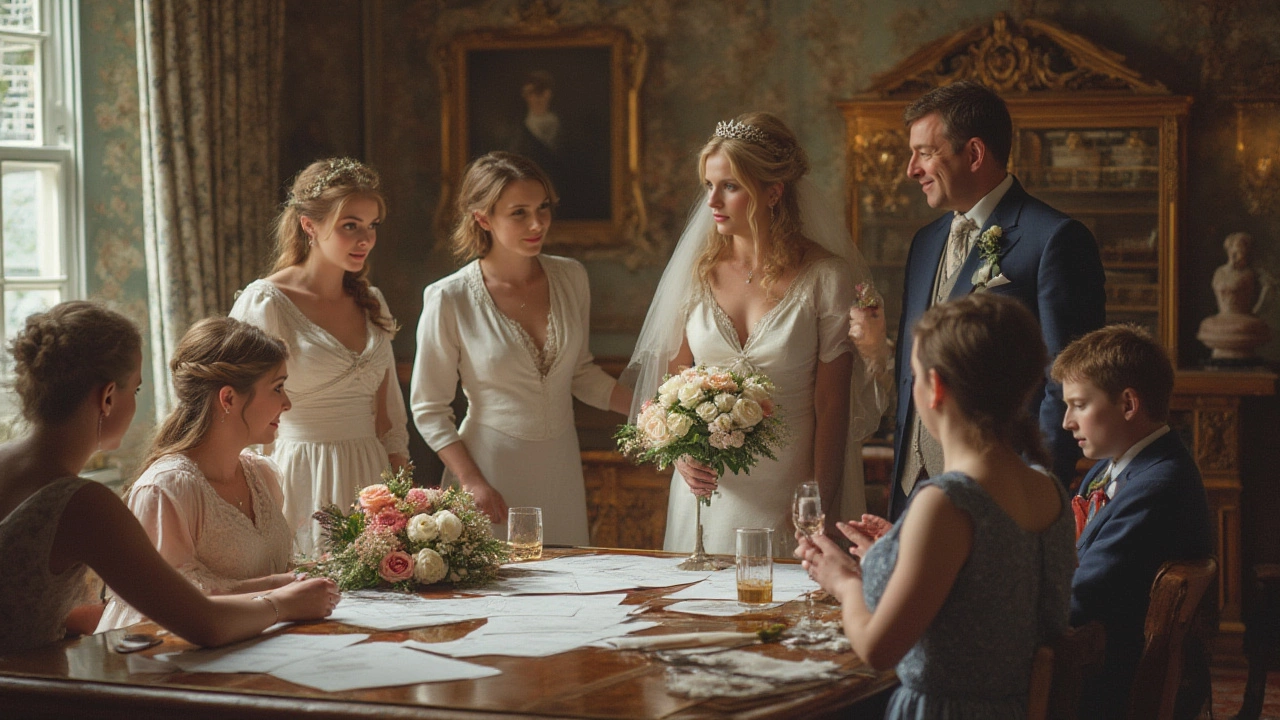Ever notice that wedding flowers often end up at the heart of heated family debates, right up there with seating charts and cake flavors? The question of who actually pays for all those gorgeous arrangements has tripped up couples for generations. Is it the bride’s family? The groom’s? The couple themselves? And what if you’re having a wedding in Auckland, or you’ve got a blended family, or you’re planning a modern celebration instead of a traditional ceremony? Turns out, the answer isn’t as simple as ticking a box on a checklist. The expectations around paying for wedding flowers have shifted a lot—and not just because tastes and budgets have grown. The way families handle wedding expenses is part tradition, part evolving social norm, and part real-world practicality.
The Classic Traditions: Who Used to Pay for What?
If you ever flipped through your grandma’s wedding album or asked your mum about her wedding flowers, chances are you heard about “the bride’s family footing the bill.” According to old-school etiquette, flower expenses were split. The bride’s family typically paid for the floral arrangements for the ceremony, including altar decorations, pew or chair décor, and the bouquets for the bride and her attendants. Meanwhile, the groom or his family would cover the bride’s bouquet and boutonnières for himself and his groomsmen—as well as corsages for the mothers and grandmothers of both families. This was the tradition followed for decades, especially in the US, UK, and New Zealand.
Let’s get specific. Here’s a traditional split, straight out of a wedding magazine from the early 1990s (and still found today at some classic weddings):
| Payee | What They Pay For |
|---|---|
| Bride's family | Ceremony and reception flowers, bridesmaids’ bouquets, décor arrangements |
| Groom/groom’s family | Bride’s bouquet, boutonnières, mother/grandmother corsages, “going away” corsage |
The reasoning? The ceremony was seen as the bride’s domain, while the groom paid for things directly tied to his role in the marriage. The etiquette was even echoed by wedding planning guides from the era. As etiquette expert Emily Post wrote years ago,
"The bride’s family, traditionally, hosts and funds the wedding celebration, while the groom’s family takes care of specific honors, including the floral touches for the bride and both sets of parents."
So if you want to stay ultra-traditional, there’s your blueprint. But how often does this actually happen now?
Modern Weddings: How Flower Budgets Have Shifted
Weddings in 2025 look a lot different than in our grandparents’ days. Many couples cover their expenses themselves, not just flowers but the entire wedding(!). There’s more blending of families, more grooms and brides contributing equally, and way more flexibility with who pays for what. In New Zealand, the US, and pretty much everywhere else, you’ll find couples who barely know or care about old-school etiquette books.
According to a 2024 New Zealand Weddings study, just 18% of couples said the bride’s family alone paid for wedding flowers, while nearly 70% reported splitting the cost between families or covering it as a couple. The rest arranged their own unique arrangements—sometimes with help from both families, sometimes leaning on grandparents, or even siblings. The biggest theme now is “whatever works for you.”
Couples now often build a full wedding budget together, which includes the cost of flowers—no matter who ends up holding the bouquet or decorating the tables. Many wedding planning websites, like The Knot or New Zealand Weddings, suggest talking directly and honestly with everyone involved before vendors are booked. Joint bank accounts and shared wedding funds are common. Some people even ask grandparents to sponsor specific décor, such as the ceremony arch or table centerpieces, as a way to honor them.
Divorced or blended families add another twist. Sometimes one side steps up, sometimes both, and sometimes the couple just pays to avoid drama. With LGBTQ+ weddings and modern partnerships, the entire idea of “bride’s family” and “groom’s family” can get thrown out the window. And honestly, good riddance—because your wedding should work for you, not someone else’s rulebook.

Flower Costs, Budgets, and Money Talk
Still, whether it’s tradition or a new twist, wedding flowers aren’t cheap (unless you go wildflower-picking on your own or opt for minimalism). Fresh arrangements for a moderate Auckland wedding might cost between $2,500–$4,000 NZD, with some floral designers charging even more if you want exotic blooms, elaborate installations, or out-of-season flowers.
Here’s a look at average 2024 New Zealand wedding flower costs, according to New Zealand Weddings magazine:
| Item | Average Cost (NZD) |
|---|---|
| Bridal bouquet | $250–$450 |
| Bridesmaid bouquets (each) | $120–$200 |
| Boutonnières (each) | $25–$40 |
| Ceremony arch or backdrop | $500–$1,200 |
| Reception centerpieces (per table) | $120–$250 |
| Full floral design (all inclusive) | $3,000–$10,000+ |
If that number looks scary, don’t panic yet. Lots of florists offer packages, and you can always scale up or down. Start with your budget, not your flower wish list—trust me. Have a real talk with your partner and your families (if they’re helping) about what you want, what you need, and what you can afford. Here are a few quick tips for managing the money conversations:
- Be specific. Ask, “Would you like to cover the bouquets?” rather than, “How can you help?”
- Write down everything you want: bouquets, corsages, centerpieces, ceremony flowers, aisle decorations. Compare your list to your budget.
- Consider artificial flowers, dried flowers, or local seasonal blooms—they’re usually more budget-friendly.
- If someone offers to pay, clarify what part or how much so things don’t get awkward later.
- Remember, you don’t need flowers on every surface (even if Pinterest says you do!).
Probably the hardest part? Starting the conversation—but once it’s out there, it usually flows better than you expect.
Real-Life Stories, Unique Situations, and Smart Tips
If you ask ten couples in Auckland who paid for their wedding flowers, you’ll get ten stories, and half of them will involve a little negotiating or an unexpected twist. One couple got creative by growing their own wildflowers for the reception. Another asked a favorite aunt, who’s a garden club pro, to arrange bouquets as a wedding gift. A third split costs by section: bride’s family paid for the ceremony flowers, groom’s covered the reception centerpieces, and the couple took care of their own bouquets.
Don’t be afraid to set your own rules. Maybe you’re eloping or throwing a backyard party, or maybe you just want a single statement arch instead of a parade of table flowers. The key is to talk early, talk honestly, and remember why you’re having a wedding in the first place. The flowers should match your vibe, not anyone else’s expectations.
A few practical tips for today’s couples:
- Reuse arrangements between ceremony and reception. Have someone in charge of moving altar pieces to the head table afterward.
- Opt for local, seasonal flowers to save money and drama. Peonies flown in from Europe in winter? Pricey and unnecessary.
- Check whether your venue provides any floral décor. Some Auckland spots surprise couples with built-in beauty, which can make a huge dent in your budget.
- If multiple people want to contribute, let them sponsor specific arrangements. Aunt wants her favorite lilies at the altar? Perfect—give her that task.
- Explore rental flowers. Faux isn’t always “fake-looking” anymore, and some rental companies in New Zealand deliver next-day arrangements that look amazing in person and in photos.
There will always be couples chasing the biggest, lushest floral installations money can buy, and there will always be those who’d rather spend their budget elsewhere (hello, extra honeymoon days!). The point is, wedding flowers are just one piece of the puzzle. Who pays for them—and where you source them—should support your story, not stress you out. Keep it honest, keep it joyful, and your wedding will feel as beautiful as those flowers look.

